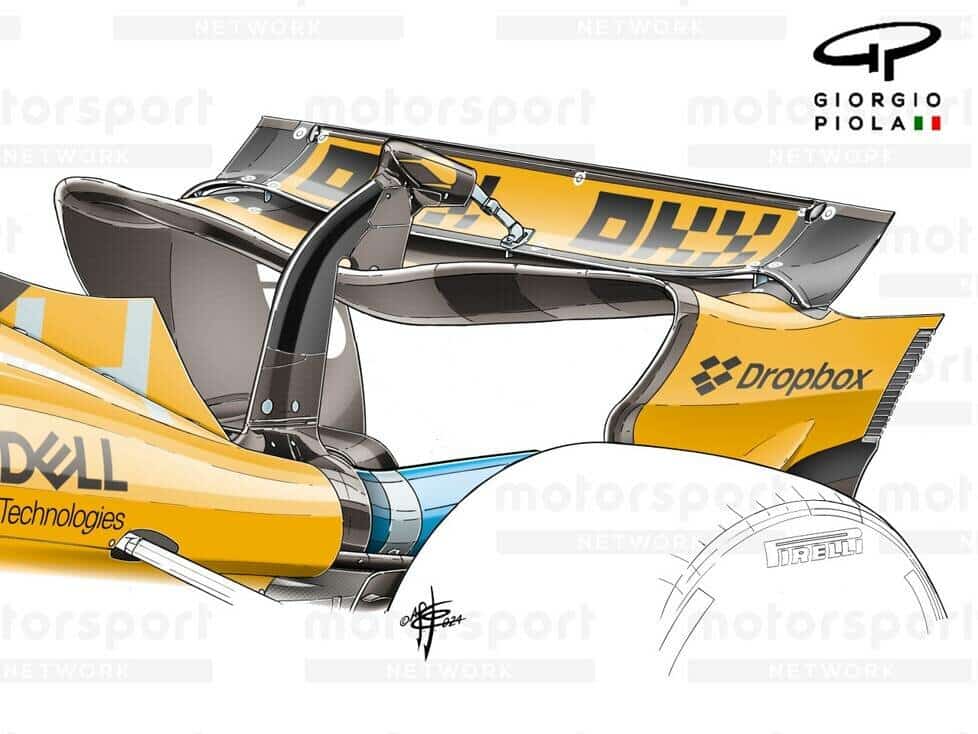McLaren’s aggressive development in the 2024 Formula 1 season is particularly evident in the rear wing and its different versions on the MCL38
At the Brazilian Grand Prix, McLaren was running a development stage of the rear wing and beam wing on its MCL38. Again. Because it was already the seventh different rear wing variant in the 2024 Formula One season and one that was tailored to the special requirements of the Autodromo Jose Carlos Pace in Sao Paulo.
Previously, McLaren had introduced new rear wing versions in Saudi Arabia, Imola, Monaco, Silverstone, Spa and Zandvoort. And the rear wing on a Formula 1 car is known to work best in direct interaction with the beam wing below, which is also usually adapted to ensure the desired balance of the car.
In fact, the beam wing has seen even more development at McLaren than the rear wing: the English traditional team has had a total of twelve different versions with them so far this season.
There have been modified beam wings in Saudi Arabia, Miami, Imola, Monaco, Spa, Zandvoort, Singapore and Austin. McLaren even included three different specifications in its arsenal for its home race at Silverstone. And from two-piece arrangements to one-piece beam wings, everything was there.
What was new about the MCL38 in Brazil
The most striking feature of the Brazilian update at the rear of the MCL38 was the rear wing design with a clearly visible hollow in the middle of the main profile. Unlike previous rear wing versions, the bulge at the leading edge is more pronounced and the outer areas of the upper flap have been modified to be more angular. The latter had already been seen in a similar form on other wings for a lot of downforce.
So what we see here is a compromise between downforce for the narrow second sector and sufficient DRS leeway for the straights at Sao Paulo.
The excitement continues one floor down with the beam wing, which is aligned exactly opposite to the rear wing main profile, like a mirror image. This was McLaren’s approach to the Brazilian sprint. However, for the qualifying and the Grand Prix on a wet track, the team opted for a rear wing-beam wing combination for more downforce, as our graphic illustrates.





